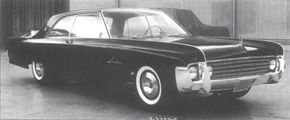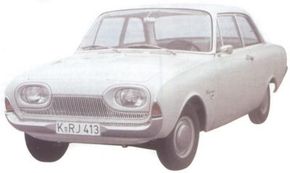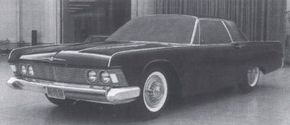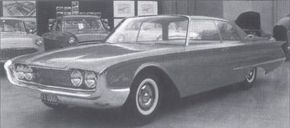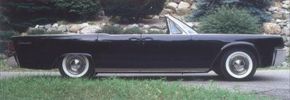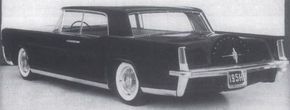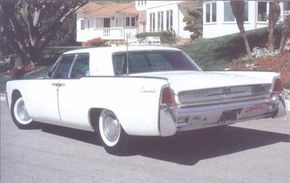Heated meetings almost led to the discontinuation of the 1961 Lincoln Continental. Robert McNamara was still new to his post as vice president in charge of all car and truck programs, having recently replaced Lewis Crusoe, who retired in 1957 due to ill health.
Having headed the Ford Division before his promotion, McNamara was familiar with its plans, but he wanted a full explanation of what was brewing for Lincoln, so he instituted a series of biweekly meetings with Lincoln's management. The meetings were attended by Ben D. Mills, general manager; Harold MacDonald, chief engineer; Emmett Judge, chief product planner; and support staff. No one from Styling was included in the meetings.
Because MacDonald expected that McNamara would ask about features planned for future Lincolns, he asked Harold Johnson, his executive engineer for advanced projects, to attend. The subjects for discussion at the first meeting included sales, finance, and projections. The second meeting dealt with new products and planned technical features.
Johnson remembers being very involved in the presentations made at the second meeting, which included such topics as proposed suspension advances and how to install curved glass in future production Lincolns. By the time the third and fourth sessions were held, they had become presentations with little discussion, except when McNamara asked questions.
Partway through the fourth meeting, that all changed. According to McNamara, he stopped whoever was making the presentation and said it was time to "clear the deck and put all the cards on the table."
Everyone but Mills, MacDonald, and Johnson were asked to leave the room, and then McNamara announced that, based on Lincoln's dismal financial projections, he had decided to recommend that the car line be terminated. He didn't like the direction Lincoln was heading, didn't like the fact Lincoln had never made a profit, and he hadn't heard anything from Lincoln's management that changed his mind.
For a few seconds, Johnson says, you could have heard a pin drop. Everyone in the room took McNamara, who was not known for his sense of humor, as dead serious. Then Mills, who had come to Ford in 1946 with McNamara as one of the "Whiz Kids," asked, "Bob, you can't really do that, can you?"
McNamara responded, "You bet I can do it." A heated discussion followed, with everyone in the room arguing against McNamara's proposed recommendation, but none of the arguments made a dent on McNamara, who gave no sign of changing his mind.
After what seemed like an eternity, Mills was finally able to persuade McNamara to back off, something not often done. Mills argued that the Ford family wouldn't agree to discontinue Lincoln, especially since the Continental Division had been dissolved only a year and a half earlier, and the Edsel was likely the next to go. Besides, Mills argued, it was unfair to employees, dealers, and customers to stop making Lincolns "cold turkey" without some sort of advance warning.
McNamara reluctantly told Mills that he would agree to one more Lincoln production cycle, but only on specific conditions. One of the conditions was that the next Lincoln had to be a lot smaller.
Recalling the events of that meeting more than 40 years later, McNamara emphasized that his biggest concern was that future Lincolns had to make a profit. He told Mills, MacDonald, and Johnson that he had recently seen a clay model of a formal Continental-like Thunderbird downstairs in Engel's studio that had been rejected in favor of a sportier T-Bird proposal.
McNamara told them that if that design could be made into a four-door and profitably built as the new Lincoln, "without significantly increasing its size," he would "go with the program." According to Johnson, no one else in the room except Mills knew anything about the clay model to which McNamara was referring, but, as the meeting broke up, Mills turned to MacDonald and Johnson and said, "You'd better get down there ASAP. Your jobs are cut out for you!"
It was late when the meeting broke up, so, early the next morning, Johnson and one of his assistants, Bill Davis, hurried to the Styling Center to look at the clay model. When they saw it, they decided they really didn't know what McNamara meant about not making it significantly bigger.
They picked up the package drawings for the car and returned to Lincoln advanced engineering to study them. Ultimately, they decided not to take a chance, but to only lengthen the car the bare minimum needed to make it a four-door.
Johnson and Davis then returned to the Styling Center, where they asked Engel to lengthen the car by 10 inches, add two more doors, and also build a separate seating buck based on their hastily modified package drawings.
More work would have to be done to ensure McNamara's approval, however. The next section has the full story.
For more information on cars, see:

